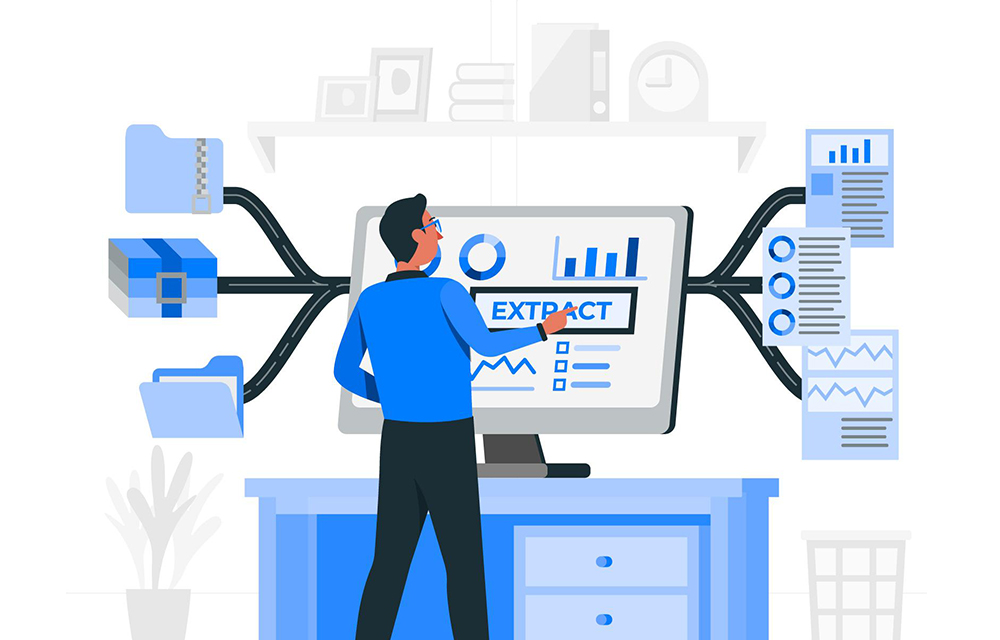Lead generation is a critical part of any successful marketing strategy.
Brickwork Blogs


In today's data-driven world, businesses rely heavily on data to make informed decisions. Business Intelligence (BI) tools and analytics have become essential for organizations to gain insights into their operations, customer behavior, and industry trends.
Globally, 26% of companies have adopted BI. More than 33% of large-sized companies will use decision intelligence by 2023.
However, data comes in various forms and formats, making it challenging to analyze and interpret effectively. This is where data conversion plays a critical role in maximizing your analytics potential.
Ways to Maximize Analytics Potential during Data Conversion
Data conversion refers to the process of changing data from one format to another, such as converting data from a paper-based system to a digital format or from one software application to another. The impact of data conversion on business intelligence cannot be overstated. Here are some ways data conversion can help maximize your analytics potential:
1. Standardization of Data
Data conversion helps standardize data by converting data from different formats into a uniform format that can be analyzed more easily. This ensures that the data being analyzed is accurate and consistent, eliminating errors that could skew the results of the analysis. Standardization of data also enables data comparison across different sources and helps identify patterns that might otherwise go unnoticed.
2. Improved Data Accessibility
Data conversion can make data more accessible by converting it into a format that can be easily analyzed using BI tools. By making data more accessible, organizations can gain insights into their operations faster, make better decisions, and respond quickly to changes in the market.
3. Increased Efficiency
Data conversion can increase the efficiency of BI tools by reducing the time and effort required to process data. For instance, by converting data from paper-based systems to digital formats, organizations can save time and resources that would otherwise be spent manually entering data. This also reduces the risk of errors and ensures that the data is processed quickly and accurately.
4. Better Data Integration
Data conversion can help organizations integrate data from different sources into a single data repository. This allows organizations to gain a holistic view of their functions, customer behavior, and industry trends. By integrating data, organizations can identify trends and patterns that might be missed when analyzing data in isolation.
5. Enhanced Data Security
Data conversion can also enhance data security by converting data into a format that is more secure and less prone to data breaches. For instance, by converting data into encrypted formats, organizations can protect sensitive data from unauthorized access and theft. Helps meet international standards.
How to Avoid Mistakes during Data Conversion?

Data conversion is a crucial process in any organization that involves the transfer of data from one format to another. It may include the conversion of data from legacy systems to modern ones, migration of data to a new platform, or simply changing data formats to match the requirements of new applications. However, data conversion is a complex process that can lead to errors if not executed correctly.
Top 10 Tips to Avoid Mistakes during Data Conversion
1. Define your conversion requirements
The first step in any data conversion process is to define your requirements. Identify the source and target formats, data types, and data elements that need to be converted. This will help you to develop a clear plan for your conversion project and avoid errors later on.
2. Ensure data integrity
Data integrity is crucial during data conversion. Validate your data to ensure it is complete, accurate, and consistent. Perform data cleansing to remove any duplicate or incomplete data. This will help to avoid errors and ensure that your data is of high quality.
3. Use a data mapping tool
A data mapping tool is essential for converting data from one format to another. It helps to define the mapping between the source and target data elements, data types, and data structures. This ensures that the data is converted correctly and avoids errors in the conversion process.
4. Normalize your data
Normalization is the process of organizing your data in a structured format to reduce redundancy and improve data quality. Normalized data is easier to manage, search, and retrieve. Ensure that your data is normalized before converting it to a new format.
5. Test your conversion process
Testing is a critical step in any data conversion process. Test your conversion process thoroughly to ensure that it works correctly and that the data is converted accurately. Identify any errors or issues and correct them before the final conversion.
6. Perform error handling
Error handling is essential during data conversion. Develop a robust error-handling mechanism that can identify, flag, and handle errors during the conversion process. This will help to ensure that the conversion is completed successfully, even if errors occur.
7. Use version control
Version control is vital when converting data over time. It helps to track changes made to the data and ensures that the correct version of the data is used during the conversion process. This helps to avoid errors and maintain data integrity.
8. Document your conversion process
Document your conversion process to ensure that it is repeatable and scalable. This includes documenting the data mapping, conversion rules, and testing procedures. It helps to avoid errors during future conversions and makes it easier to maintain the data over time.
9. Involve stakeholders
Involving stakeholders in the data conversion process is crucial. Along with this, it is important to have a data governance plan in place. The data governance plan should outline the roles and responsibilities of the data migration team, the data quality standards, and the data security procedures. This includes end-users, data owners, and IT personnel. Involve them in the planning and testing stages to ensure that their requirements are met and to avoid errors during the conversion process.
10. Monitor the conversion process
Monitor the conversion process closely to ensure it is running smoothly. Identify any issues or errors and correct them as soon as possible. This helps to avoid slips and ensures that the conversion process is completed successfully.
How can Brickwork help you?
Our remote assistants use various tools for business intelligence and data management like MS Flow, Power BI, Tableau, Planogram, MS Access, Adobe, Dropbox, MS Excel, etc. We transform your data into an organized tool. Our expertise lies in data entry, cleansing, validation, tagging, and converting data from one format to another.
In conclusion, the impact of data conversion on business intelligence is significant. By standardizing data, improving accessibility, increasing efficiency, enabling better integration, and enhancing data security, organizations can maximize their analytics potential and gain insights that can help them make informed decisions.


